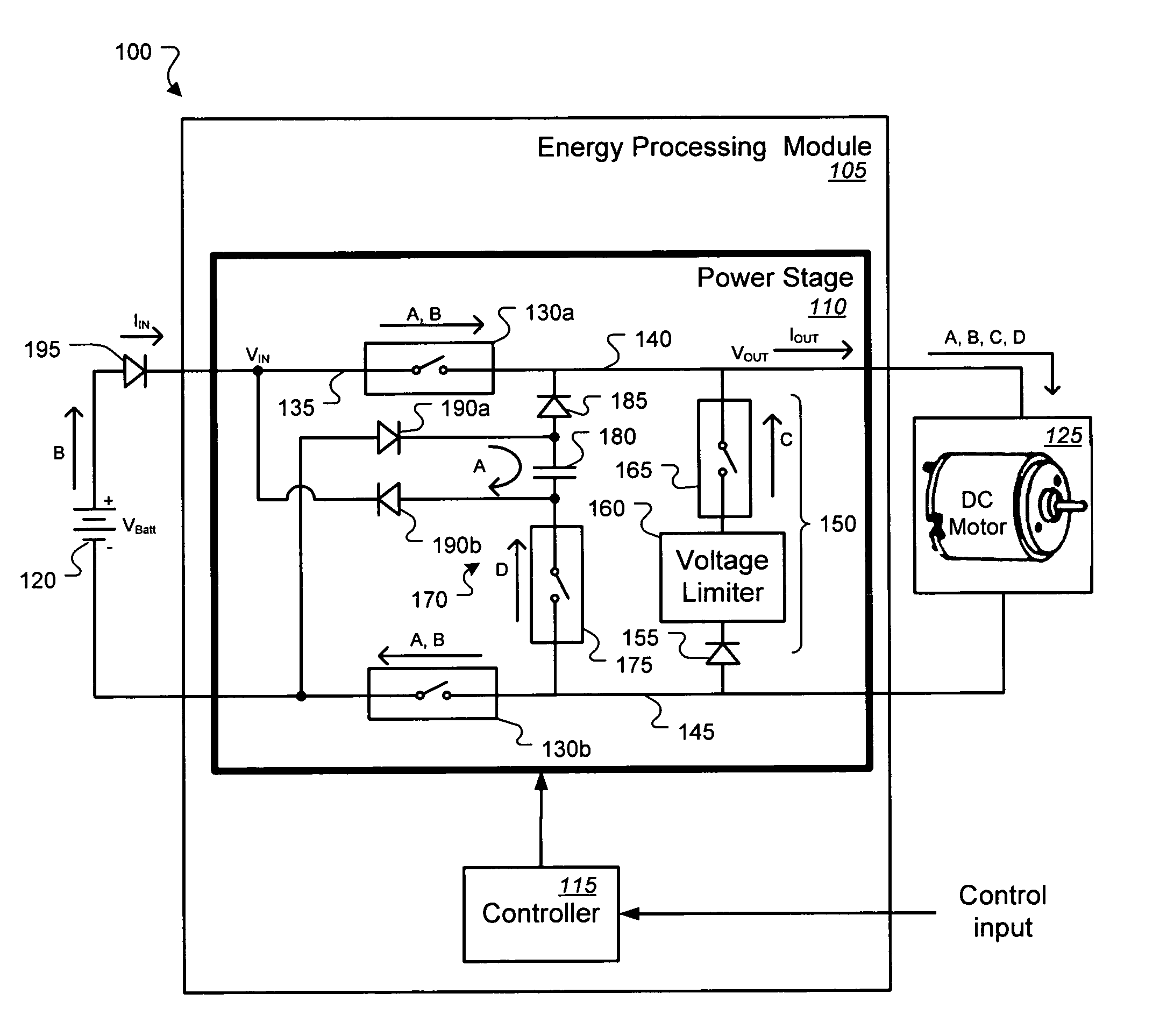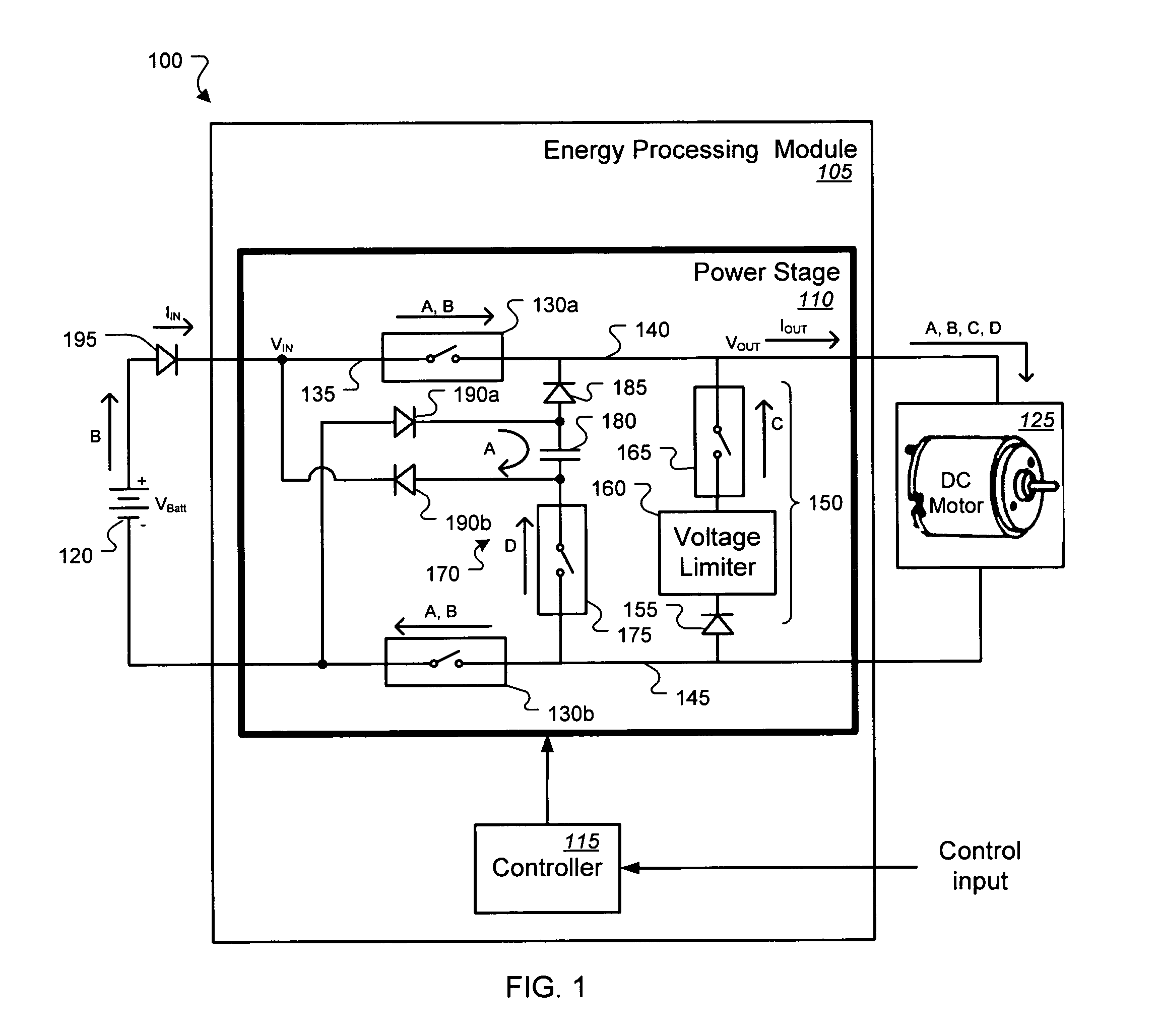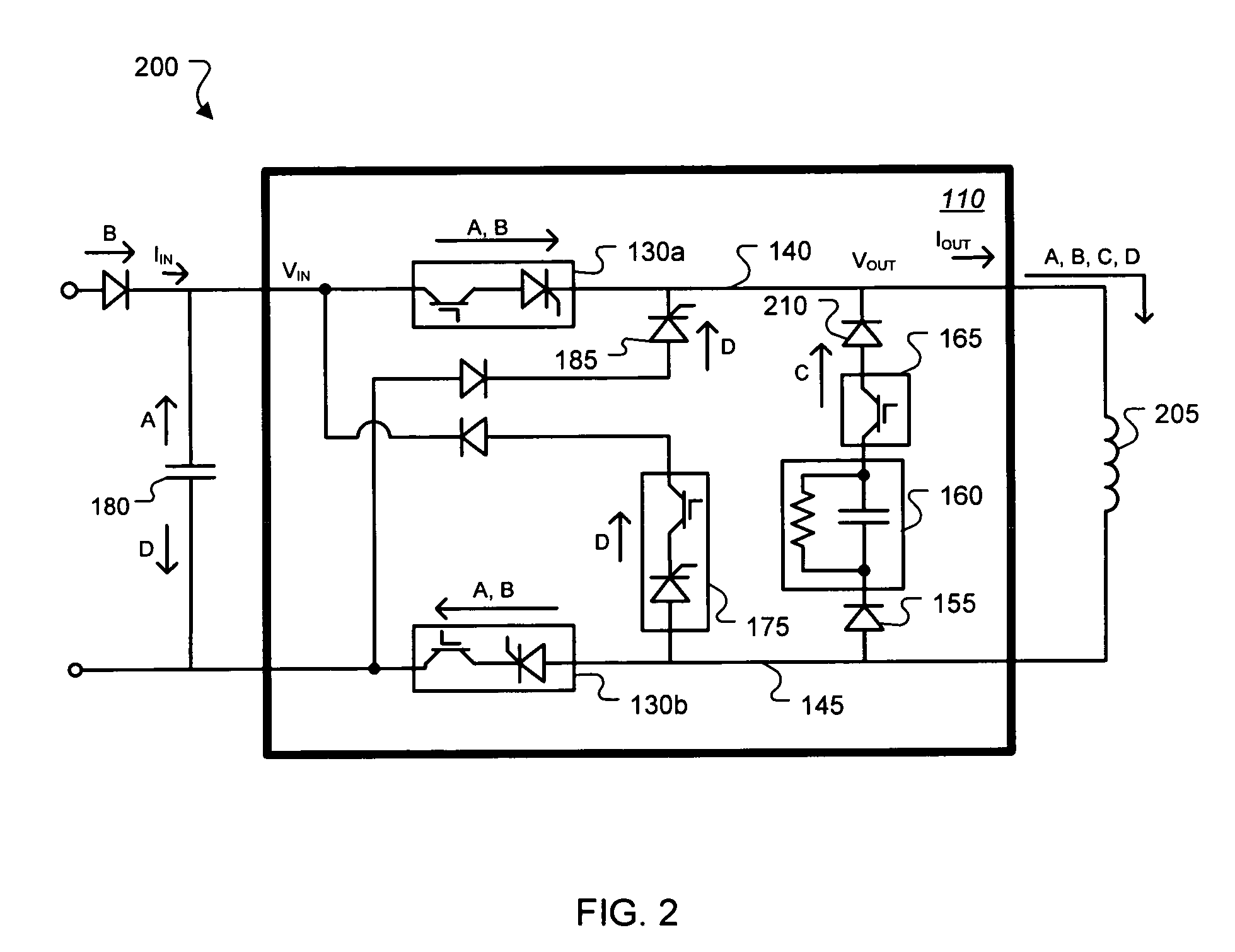Supply architecture for inductive loads
- Summary
- Abstract
- Description
- Claims
- Application Information
AI Technical Summary
Benefits of technology
Problems solved by technology
Method used
Image
Examples
Embodiment Construction
[0021]FIG. 1 shows an exemplary system 100 in which energy may be supplied to inductive and / or resistive loads at a controllable rate with high efficiency and low electromagnetic noise. The system 100 of this example includes an energy processing module 105 that receives energy at an input, processes the energy, and delivers unidirectional current to supply energy to a load connected at an output. The module 105 includes a power stage 110 that operates in response to control signals from a controller 115. In operation, the controller 115 controls the operating states of switches in the power stage 110 according to a sequence of operating states that may, for example, be repeated in a cyclical pattern. In an exemplary cycle of operation, the controller 115 generates a sequence of operating states that cause the power stage 110 to store energy from a power source 120 into an inductive load 125, control a reverse electromotive force (REMF) that may develop when the inductive load 125 i...
PUM
 Login to View More
Login to View More Abstract
Description
Claims
Application Information
 Login to View More
Login to View More - R&D
- Intellectual Property
- Life Sciences
- Materials
- Tech Scout
- Unparalleled Data Quality
- Higher Quality Content
- 60% Fewer Hallucinations
Browse by: Latest US Patents, China's latest patents, Technical Efficacy Thesaurus, Application Domain, Technology Topic, Popular Technical Reports.
© 2025 PatSnap. All rights reserved.Legal|Privacy policy|Modern Slavery Act Transparency Statement|Sitemap|About US| Contact US: help@patsnap.com



